
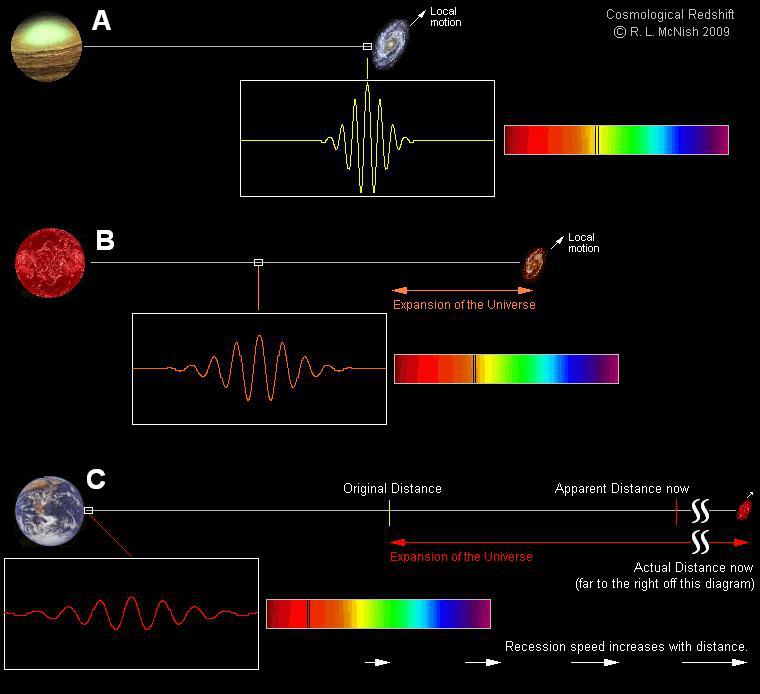
There are several different kinds of redshift that we encounter in the universe. Those three are ‘gravitational’, ‘doppler‘ and ‘cosmological‘. Before looking at two examples, it is best to have a look at the three different kinds of redshift so that we can better understand what is going on.
Gravitational Redshift:
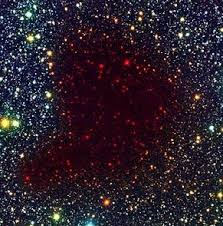
Gravitational redshift is the reddening of light as it escapes from the gravitational well in space time. For us, it is not something that we notice on a day-to-day basis. We don’t see light being reddened as it is reflected off the face of your friend, and yes, your red shoes are actually… red… It’s not gravitational redshift fooling you! To give a real life illustration of gravitational redshift we’re going to head back to the 1960’s where the first major test of gravity on photons was tested, to test the theory of general relativity. This test was done at Harvard University and is known as the ‘Harvard Tower Test’ (or the Pound–Rebka experiment) . As the name suggests it was a test taken on a tower at Harvard University. Yes, scientists are such an imaginative bunch.
The idea was to use an isotope of Iron (Fe57 to be exact). As atoms have exact absorption and emission lines, what was hoped would happen is that the gravitational redshift would change the emitted photon so that it wouldn’t be absorbed by the Fe57. Fe57 was put at ground level and then a Fe57 detector was placed at a height of 22.6 meters at the top of a tower. The emitter was effectively jiggled so that the velocity change could be determined over the distance. The same experiment was then alternated so that the detector was at ground level and the emitter at the top of the tower, this was done so as to try to reduce errors as much as possible.
Doppler Shift:
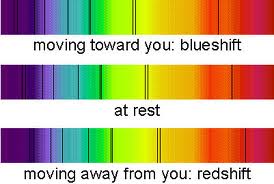
Doppler shift is the change of wavelength due to the relative motion of an object; this can be seen in either a red or blue shift, depending on the direction of movement. A blue shift if the object is approaching, or a redshift if receding. A way of understanding what causes the doppler shift is to look at the equation – or better yet, the derivation – that can be done when photos aren’t even considered as a wave. For the full derivation, see Chapter 8 of ‘Einsteins Theory of Relativity versus Classical Mechanics’ by Paul Marmet.
The final equation ended as: f(final)= f(initial)*(1-v/c)
This equation is used for objects that are moving away from us — redshift. The importance of the derivation that lead to the above equation is that it explains why the redshift occurs: A loss of energy as it transfers its kinetic energy to the moving atom that emitted it.
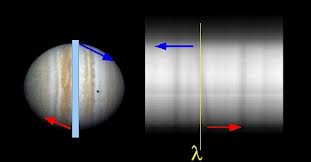
Dropper shift has, in the past, been used to determine the rotational velocity of Jupiter. This can now be done by amateur astronomers with the use of a spectrograph that can simply be purchased online. A tutorial by Shelyak Instruments shows how determining the rotational velocity with some of their equipment can be achieved and a brief overview of what is done. The spectrum of both sides of Jupiter are measured, and due to the rotation, one side of Jupiter is moving towards us and the other is moving away from us. If you are able to get an accurate measurement of the spectrum, the change in the observed spectrum is your doppler shift. Using the equation, the rotational velocity is calculated and there we go!
Cosmological Redshift:
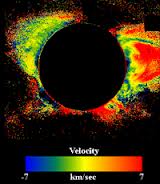
The cosmological redshift is the most interesting of the three types of redshift because it has nothing to do with the mass of the object emitting the light or its relative motion through the universe. Cosmological redshift is a byproduct of distance alone. To us on the Earth, this can be a hard idea to comprehend. A good reason for this is that my radio continues to work as I drive across the state, if the radio signal redshifted over distance, then my radio would cut out. Not due to low signal strength, but because I’m moving further away from the transmitter.
Cutting a really long story short, the universe is expanding and it is this expansion that stretch-… Reddens… the light as it travels vast distances through the universe. The amount of redshift caused by cosmological redshift is usually quite minor for amateur astronomers, as we generally can’t see that far into the distant universe. It’s not at all surprising, however, at redshift z=1 galaxies have virtually become invisible to optical wavelengths, entirely so in many ways that is the absolute limit for an amateur astronomer at optical wavelengths.
The cosmological expansion is an acceleration of ~72km/s/Mpc, which says that for every Mega parsec of distance, space is receding at 72 km/s. Using all of the information above we can deduce the types of redshift experienced by two different stellar objects.
1) A nearby star
2) A distant quasar

So firstly, let’s have a look at a nearby star. Since one star is somewhat like another, we can look at our sun and use that as an example. Our sun, as small as it is, has a very small gravitational redshift that we’ve been able to detect: a mere 0.633 km/s. It’s not until we start looking at stars like a white dwarf that the gravitational redshift becomes greater…
Much greater! From a 0.633 km/s to 30-40 km/s!
So we know that a star has gravitational redshift, even one as small as ours. As all stars rotate, we know that it will also have a doppler shift; red shift on one side of the star and blue shift on the other side, just like what was discussed with Jupiter. As for the cosmological redshift, well it only makes a real difference over very, VERY vast distances.
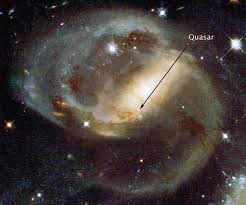
What about a distant quasar? One study suggests that although gravitational redshift does have an effect on on light being emitted by a quasar, it’s not an overly substantial amount of the redshift. As a quasar is powered by a supermassive black hole at the center of a galaxy, the quasar is the accretion disk and not the black hole itself. This is why it is understandable that gravity may not cause a substantial amount of redshift.
With a doppler shift, however, we’re able to see the rotational speed. In a quasar, this could be far more substantial, as a quasar is likely to be rotating fairly quickly. At least in the center, anyway. Though, at the distance that the quasars are, detecting the physical rotational velocity from one side of the accretion disk isn’t really practical — it’s a very bright, very small object, very far away. A lot of very’s there.
Although both gravitational redshift and doppler shift are likely to have a small influence on the overall redshift of a quasar, it is predominantly a cosmological cause.
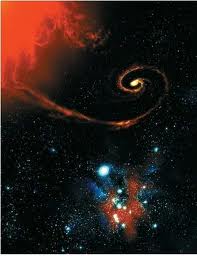
From both of these examples we can see that every massive object has a detectable redshift, and our sun has a small but still detectable one. If it moves, it has a doppler shift. This is what is used more in our every day lives; speed cameras and the like. Cosmological redshift isn’t noticeable until we’re looking outside of our own galaxy — gravity is far stronger and the distances just aren’t far enough for it to have a noticeable affect. Don’t worry, the universe isn’t going to expand in such a way that you’re going to be stretched apart. At least not yet!